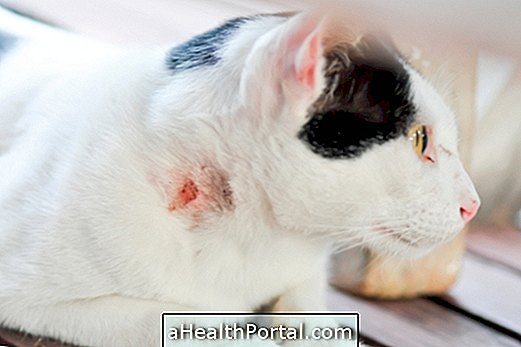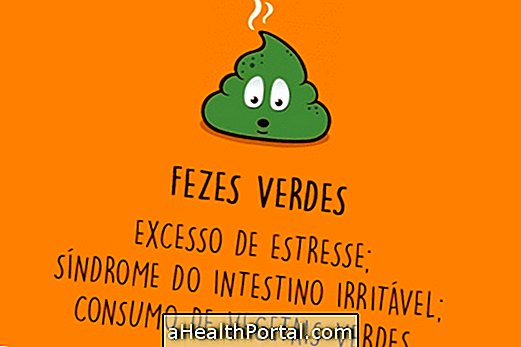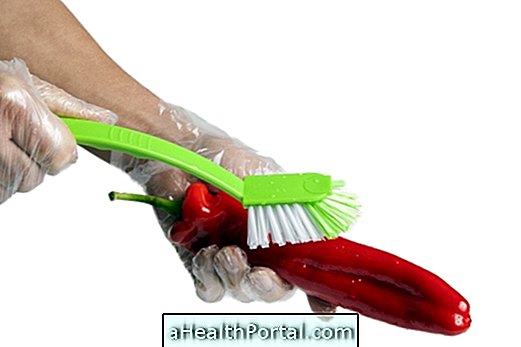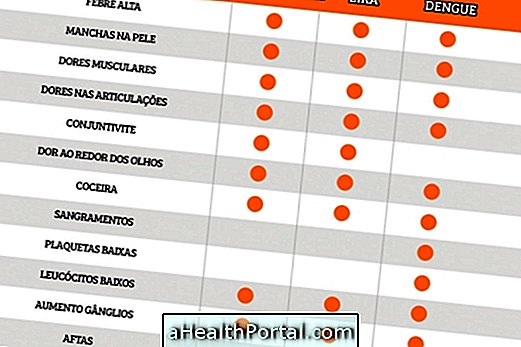Cats, when not treated properly, can transmit some diseases to people through contact with their feces, saliva or hair. However, taking good care of the pet, taking it to the veterinarian whenever it is necessary and at least once a year, can ensure the health of the animal and also of his family.
To avoid the most common health problems that can be caused by these animals should adopt some strategies, such as committing to take good care of the animal, offering a quiet and quiet, clean water and food, because this is the most appropriate food and complete, and that helps to keep the cat free of diseases, thus reducing the risk of you and your family being contaminated.
The main diseases transmitted by cats are:

1. Respiratory allergy
Cats produce a protein called glycoprotein, which triggers a number of allergic symptoms such as sneezing, eye lids, breathing problems, and even asthma in certain people. These can not have cats as pets and should also avoid contact with the animal as much as possible.
If you have gained a kitten and have noticed that these symptoms have become frequent, as if you were always having a cold, with a runny nose, you should go to the doctor because it may be asthma. Here's how to manage these symptoms by clicking here.
2. Toxoplasmosis
It is transmitted through contamination with cat feces and can cause poor training in the baby if the mother is contaminated during pregnancy. So to protect yourself, the cat should always do his needs in a cat's own sand, and this should be cleaned regularly.
To clean a glove or small plastic bag should be used and then throw the faeces and urine leftovers in the garbage or the toilet, giving discharge soon after. Understand what it is and how to treat toxoplasmosis by clicking here.
3. Skin ringworm
It can be transmitted by skin-to-skin contact with cats, and causes a lot of itching and redness on the skin. Its treatment can be done with the use of antifungals like ketoconazole, under medical guidance.
To protect yourself, you should keep the cat always well taken care of and avoid skin-to-skin contact with the animal whenever possible.
4. Bartonella henselae infection
When the cat scratches the human skin, it can transmit a bacterium called Bartonella henselae, which can cause skin infection in people with compromised immune systems, weak due to the use of immunosuppressants, during the treatment of AIDS, cancer and also in those who have already received a transplant. Learn to recognize the symptoms of this disease by clicking here.
This rarely happens in people who are in good health, but to prevent it is advised to keep a distance from cats that are usually bitchy and that bite or scratch people. Avoiding pranks that the cat does not like is also key to avoid being bitten or scratched by the cat.

5. Sporotrichosis
It can be transmitted through the bite or scratch of the cat contaminated with the fungus causing the disease. Your treatment can be done with the use of antifungals like thioconazole, under medical guidance. When the animal has this disease it is normal to suggest wounds that do not heal on your skin and the more advanced the disease the more wounds may arise.
This fungus can be transmitted between cats during their fights, when they scratch or bite, and the only way to control this disease is with the use of medicines prescribed by the veterinarian. In order for the person to protect himself he must keep away from the injured animals and if your cat is like that, you should treat him with very thick rubber gloves and follow all the treatment indicated by the veterinarian to save the life of the animal.
If the person is scratched or bitten, they should see a doctor for proper treatment.
6. Visceral Migrans Larva Syndrome
It is transmitted by ingestion of egg from the vermin, which can affect the intestine, liver, heart or lungs causing a lot of complications in the person.
To protect the cat's feces should be thrown in the trash, properly bagged, or placed in the toilet, giving discharge next. Giving remedies of worms to the cat is also essential to protect yourself.
7. Hookworm
It is transmitted through the penetration of the parasite through the skin, can cause hemorrhage in the liver, cough, fever, anemia, loss of appetite and fatigue in the person.
To protect the person should avoid walking barefoot at home and in the yard where the cat has access and can do their needs. In addition, the safest is to give the animal worms medicine and that it has a basket with its own sand so you can pee and poop always in the same place and in a more hygienic way.
In addition to this care, it is also necessary that the animal is vaccinated and that it goes to the veterinarian at least once a year so that its health is evaluated to guarantee the healthy life of the kitten and of the whole family.
How to avoid these diseases
Some tips to avoid contamination with diseases transmitted by cats are:
- Take the cat to the veterinarian regularly so that he can be vaccinated and receive appropriate treatment;
- Wash hands with soap and water always after touching or playing with the cat;
- Be careful when handling the cat's faeces, using gloves or a plastic bag to pick them up and then take them to the trash bag or toss them in the toilet bowl;
- Change the cat's sand regularly;
- Wash very well the places where the cat is in the habit of staying;
- Do not sleep in the same bed as the cat, nor let it stay on the couch or chair.
Although they do not appreciate cats they also need baths, but the ideal is to take him to the vet until he gets used to it. A good strategy is to cover your ears during bathing because cats are afraid of water because they fear it might get into their ears, which can cause an infection.
























